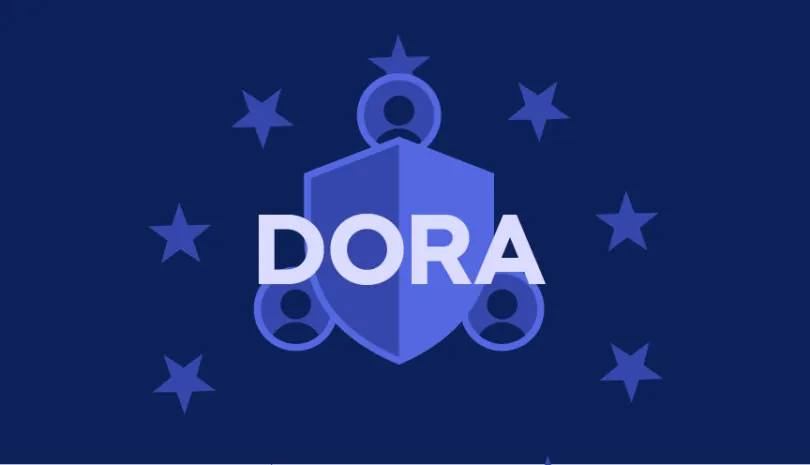Compliance isn’t just about internal controls anymore. As regulations such as DORA, NIS2, and GDPR expand their reach, companies are under pressure to demonstrate that their vendors meet the same standards they do. This means evaluating, monitoring, and managing third-party risk with the same level of rigor as in-house systems.
While each regulation has its own focus, resilience for DORA, cybersecurity for NIS2, and data protection for GDPR, they all share a common thread: accountability across the supply chain. A centralized third-party risk management solution can simplify this process by bringing assessments, monitoring, and reporting into one place. It enables teams to work smarter, respond faster, and stay audit-ready, without the chaos of spreadsheets or siloed tools.
In an environment where third-party failures can lead to fines or reputational damage, having a single source of truth for vendor risk is no longer a nice-to-have; it’s a compliance imperative.
The Rising Risk of Third Parties in Regulatory Compliance
Third parties have become an essential part of how businesses operate, but they’ve also become one of the biggest sources of regulatory risk. Whether it’s cloud providers, software vendors, or service partners, these external parties often handle sensitive data, support key operations, or have direct access to critical systems.
As regulations evolve, so do the expectations around vendor oversight. Authorities are no longer just focused on your internal controls, they want to know that your entire digital ecosystem, including your suppliers, is secure and compliant. The problem? Many organizations still manage vendor risk in a fragmented way, with siloed tools or inconsistent processes across departments.
This lack of centralized visibility can create serious gaps, especially when high-profile breaches increasingly trace back to third-party vulnerabilities. To keep up with growing compliance demands, organizations need a more connected, proactive approach to identifying and managing third-party risks.
Why DORA, NIS2, and GDPR are Important for Third-Party Regulatory Compliance
EU regulations like DORA, NIS2, and GDPR each raise the bar for how organizations manage third-party risk, making it clear that compliance isn’t limited to what happens within your own walls.
- DORA (Digital Operational Resilience Act) directly addresses third-party ICT providers, requiring organizations to perform thorough risk assessments, establish contractual safeguards, secure audit rights, and define clear exit strategies. It also mandates monitoring for concentration and systemic risk across the supply chain, ensuring financial and operational resilience.
- NIS2 expands cybersecurity requirements to include third-party and supply chain visibility. It emphasizes coordinated incident response and ensures that critical infrastructure operators understand and mitigate risks introduced by their vendors.
- GDPR, meanwhile, continues to enforce strict rules around data protection. Companies must put data processing agreements in place, evaluate vendors’ privacy practices, and ensure accountability in the event of a breach. Cross-border data transfers and subcontractor use add further complexity.
Together, these regulations reflect a shared message: third-party risk is regulatory risk. Organizations must be able to demonstrate control, transparency, and compliance across all vendor relationships, or risk fines, reputational damage, and operational disruption.
Why Centralized Third-Party Risk Management Is Essential for Regulatory Compliance
Managing third-party risk across multiple regulations is no small task, especially when each framework comes with its own expectations, documentation, and reporting requirements. A centralized third-party risk management (TPRM) platform brings order to that complexity by creating a single source of truth for vendor oversight.
With unified visibility, organizations can track vendor risk levels, contract terms, compliance status, and data access in one place. This consolidated view eliminates blind spots and reduces the chance of regulatory gaps slipping through the cracks.
Efficiency is another key benefit. Instead of duplicating due diligence across teams focused on DORA, NIS2, or GDPR, security and compliance teams can share assessments and streamline workflows, saving time and resources.
Audit readiness also improves, as controls can be easily mapped to multiple regulatory frameworks and evidence gathered centrally, making audits faster and more straightforward.
Perhaps most importantly, a centralized platform enables proactive risk response. Real-time alerts and continuous monitoring allow organizations to detect changes or vulnerabilities early, before they lead to a compliance failure or breach.
In an era of growing third-party threats and regulatory pressure, centralized TPRM isn’t just helpful; it’s essential for staying secure and compliant.
Key Capabilities of an Effective TPRM Platform for Multi-Regulation Compliance
To meet the demands of DORA, NIS2, and GDPR, organizations need more than spreadsheets and scattered workflows. An effective Third-Party Risk Management (TPRM) platform offers targeted capabilities that streamline compliance and strengthen risk oversight. From aligning vendor controls with specific regulations to enabling faster audits and real-time risk response, the right solution empowers teams to scale their compliance programs without increasing manual effort. Below are five core capabilities every TPRM platform should offer to support multi-regulation compliance with confidence and clarity.
Regulatory Mapping Engine
A TPRM platform includes a regulatory mapping engine that connects vendor risk controls to the specific requirements of DORA, NIS2, and GDPR. This capability simplifies compliance by translating abstract regulatory language into actionable tasks and control checks. Whether you’re evaluating data protection safeguards, ICT resilience measures, or cybersecurity policies, the engine ensures your vendor assessments and documentation directly align with regulatory obligations. It also helps identify control gaps early, allowing you to proactively remediate issues and demonstrate compliance across multiple frameworks using a single, integrated system.
Automated Risk Assessments & Workflows
Manual risk assessments are time-consuming and inconsistent. A modern TPRM platform automates the process with pre-built questionnaires tailored to DORA, NIS2, and GDPR. These assessments can be triggered by vendor tier, service type, or onboarding stage and are complemented by automated document collection, evidence requests, and risk scoring. By streamlining workflows, teams can focus on reviewing high-impact vendors rather than chasing paperwork. The result is faster, more consistent risk reviews and a strong foundation for scalable compliance across your entire third-party ecosystem.
Ongoing Monitoring & Alerts
Risk isn’t static, and neither is compliance. An effective TPRM platform continuously monitors vendors for changes in risk posture, compliance status, and external events. It tracks breaches, policy violations, certification lapses, and other red flags in real time, triggering alerts when action is needed. This continuous visibility helps organizations respond quickly to emerging threats, mitigate cascading impacts, and stay ahead of regulatory reporting requirements. In short, it’s your early warning system for third-party risk.
Vendor Tiering & Criticality Analysis
Not all vendors carry the same level of risk. A key capability of any TPRM platform is vendor tiering and criticality analysis. This involves classifying third parties based on the sensitivity of the data they access, the services they provide, and the potential business impact of a disruption. High-risk vendors, like cloud infrastructure providers or payment processors, are prioritized for deeper due diligence and ongoing scrutiny. This risk-based approach ensures that resources are focused where they matter most and aligns with regulatory expectations for proportional oversight.
Centralized Reporting & Dashboards
When it comes to audits and board reporting, time is of the essence. A centralized TPRM platform offers built-in dashboards and reporting tools that aggregate data across all vendors and regulatory frameworks. With just a few clicks, teams can generate audit-ready reports, track compliance progress, and demonstrate alignment with DORA, NIS2, and GDPR. These insights also support internal decision-making, enabling leadership to see where risk lies, how it’s being managed, and what actions are needed to stay compliant.
Getting Started: A Practical Third-Party Regulatory Compliance Roadmap
Building a strong third-party compliance program doesn’t have to be overwhelming, especially with a clear roadmap. Here’s a practical five-step approach to get started:
Step 1: Inventory all vendors and classify by risk level.
Begin by cataloging your third-party ecosystem. Assess each vendor based on the type of data they access, the services they provide, and the potential business impact if they’re compromised. Use this to tier vendors by criticality.
Step 2: Map existing controls to DORA, NIS2, and GDPR.
Evaluate your current vendor management practices against each regulation’s requirements. Identify where you’re already compliant, and where gaps remain.
Step 3: Identify documentation and monitoring gaps.
Pinpoint missing contracts, audit rights, or security attestations. Ensure there’s a plan for ongoing monitoring and incident reporting with key vendors.
Step 4: Consolidate your TPRM activities into a single platform.
Centralize assessments, monitoring, and reporting to reduce redundancy, improve visibility, and simplify audits across multiple frameworks.
Step 5: Align legal, compliance, security, and procurement teams.
Ensure all stakeholder groups are working from the same playbook, with clear roles and shared access to third-party data and risk insights.
Following this roadmap helps create a sustainable, regulation-ready third-party risk management program.
Third-Party in Regulatory Compliance Solutions
Third-party oversight has moved from a best practice to a regulatory mandate. Frameworks like DORA, NIS2, and GDPR are actively being enforced, making third-party risk management a critical part of compliance strategy. Organizations can no longer afford fragmented processes or reactive risk reviews.
A centralized Third-Party Risk Management (TPRM) solution streamlines compliance by consolidating assessments, monitoring, and reporting into one platform. This not only reduces the burden on internal teams but also strengthens your ability to detect and respond to vendor-related risks before they lead to costly disruptions or fines.
As enforcement ramps up in 2025, now is the time to evaluate your current TPRM process. Can you confidently demonstrate vendor compliance across multiple regulations? Are your teams aligned and audit-ready?
If not, it’s time to modernize your approach. Book a personalized demo with Panorays to see how centralized TPRM can help you stay compliant, resilient, and ready for what’s next.
Third-Party in Regulatory Compliance FAQs
-
A third party refers to any external vendor, supplier, service provider, or partner that processes data, supports operations, or integrates with your systems. Regulatory compliance requires organizations to manage the risks these third parties may introduce.
-
Key regulations include the EU’s DORA (Digital Operational Resilience Act), which focuses on ICT risk management; NIS2, which strengthens cybersecurity requirements for critical infrastructure and supply chains; and GDPR, which governs data protection and privacy obligations involving third parties. Many industries also face additional regional or sector-specific requirements.
-
Yes. Organizations remain responsible for ensuring their third parties comply with relevant regulations. Failure to properly manage vendor risks can lead to penalties, fines, and reputational damage, making comprehensive third-party risk management essential.
-
Assessment typically involves due diligence questionnaires, contract reviews, security audits, and continuous monitoring. Risk is prioritized based on vendor criticality, data sensitivity, and compliance gaps. Using centralized risk management platforms can streamline this process and improve accuracy.



